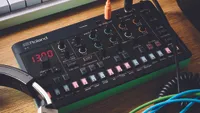MusicRadar Verdict
We're spoilt for choice when it comes to budget 101 recreations, but Donner's offering is a decent take on the format with some appealing unique features.
Pros
- +
Captures the sound of the original SH-101.
- +
Extra envelope, amp modes and expanded LFO are well-considered new sound design tools.
- +
Sequencer and arp are more flexible than those of the original 101, but keep the fundamental workflow intact.
Cons
- -
Low-level noise in the signal path.
- -
Not the cheapest 101 clone on the market.
MusicRadar's got your back
Released in 1982 and sold throughout the mid-’80s, Roland’s SH-101 is a classic analogue monosynth with a broad and lasting mass-market appeal.
On the one hand, its simplistic and approachable design masks a surprising level of versatility, capable of producing punchy basses, biting leads and rasping acid lines. All of which contribute to its status as a longtime staple tool within dance music.
That same simplicity, however, also makes it one of the best entry-level synth designs. The 101 interface, laid out in a linear left-to-right fashion, with a slider for each of its major functions, offers a wonderfully tactile way to explore the basics of synthesis. Raise each slider in the oscillator section in turn to hear the difference between its pulse, saw and sub outputs; combine two or more of these to start creating more complex wave shapes; tweak the filter, LFO and envelope to shape the sound – you’ll be a master of subtractive synthesis in no time.
The problem, at least when it comes to the original SH-101, is that second hand prices are now far higher than the thoroughly affordable £249 that it retailed for on its original release. The 101 is a great first synth – but it’s not worth spending upwards of £/$1k on.
All of which is a roundabout way of saying that I’m glad that in 2025 we have plenty of affordable SH-101 clones and emulations to choose from. Roland itself has both software and hardware based on the core 101 design. Behringer has the MS-1, which sticks fairly close to the template of the original, while the likes of D16, Softube and TAL offer solid virtual recreations.
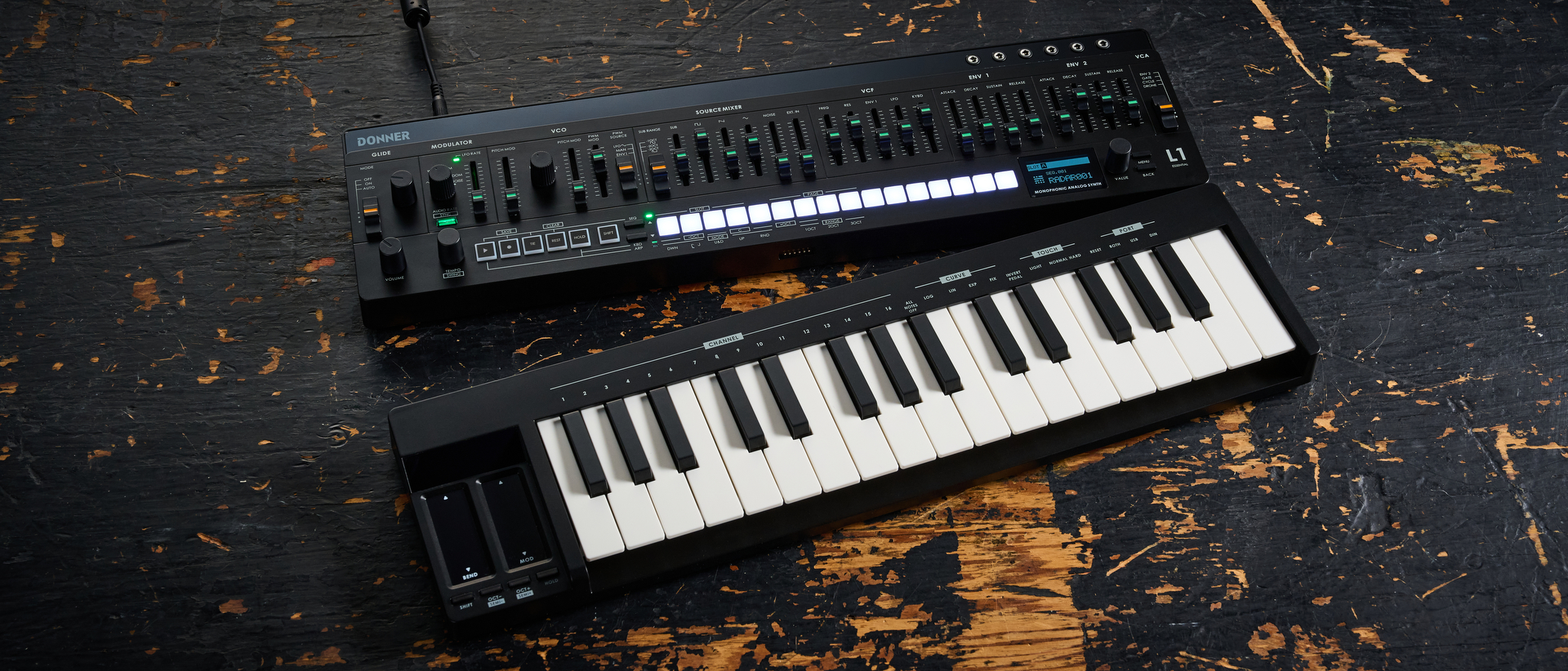
Pricing
- L1: £249/$259
- L1 & KB-32M: £359/$369
- KB-32M: £109/$109
Donner Essential L1: What is it?
Into this mix enters Donner’s Essential L1, a new analogue monosynth heavily inspired by the design of the SH-101. On the spectrum between clone (Behringer’s MS-1) and modern evolution (Roland’s Aira S1) this sits somewhere in the middle. Its oscillator, filter and VCA chips are faithful to those found in the original instrument, aiming to recreate the classic 101 sound, but it adds several new features to the design, including an additional ADSR envelope generator and a variety of amp envelope modes.
One of the most notable evolutions offered by the L1 is its detachable keyboard – sold as a separate product, the KB-32M, but available as a bundle with the L1. This allows the instrument to function both as a desktop module and a playable standalone instrument.
Want all the hottest music and gear news, reviews, deals, features and more, direct to your inbox? Sign up here.
Despite years of experience in the guitar, piano and e-drum realms, Chinese brand Donner only has three production-focused instruments to its name, two of which take inspiration from classic Roland hardware. Its first synth release was the B1 Bass Synthesizer, a budget monosynth based on the design of the TB-303.
I reviewed that instrument a few years ago and came away pleasantly surprised – despite a dull aesthetic that looked more admin than acid, the B1 nailed the low-end heft and squelchy filter sound you expect from a 303 clone.
Broadly speaking, the L1 is another impressive update to the Roland template. It’s a better looking instrument than the B1 – its all black, slider-clad interface is a nicely modernised take on the design of the original.
The core elements of the 101 sound engine are all available here, and sound pretty on the money to my ears. The single oscillator has blendable sub, saw and noise outputs, along with a pulse output with PWM that can be routed from the LFO or envelope, or modulated by hand.
These feed into the low-pass filter that sounds appropriately acidic with the resonance raised and modulation applied. There’s a glide function too – another important element of the classic 101 sound, allowing for the creation of bendy portamento basses and leads.
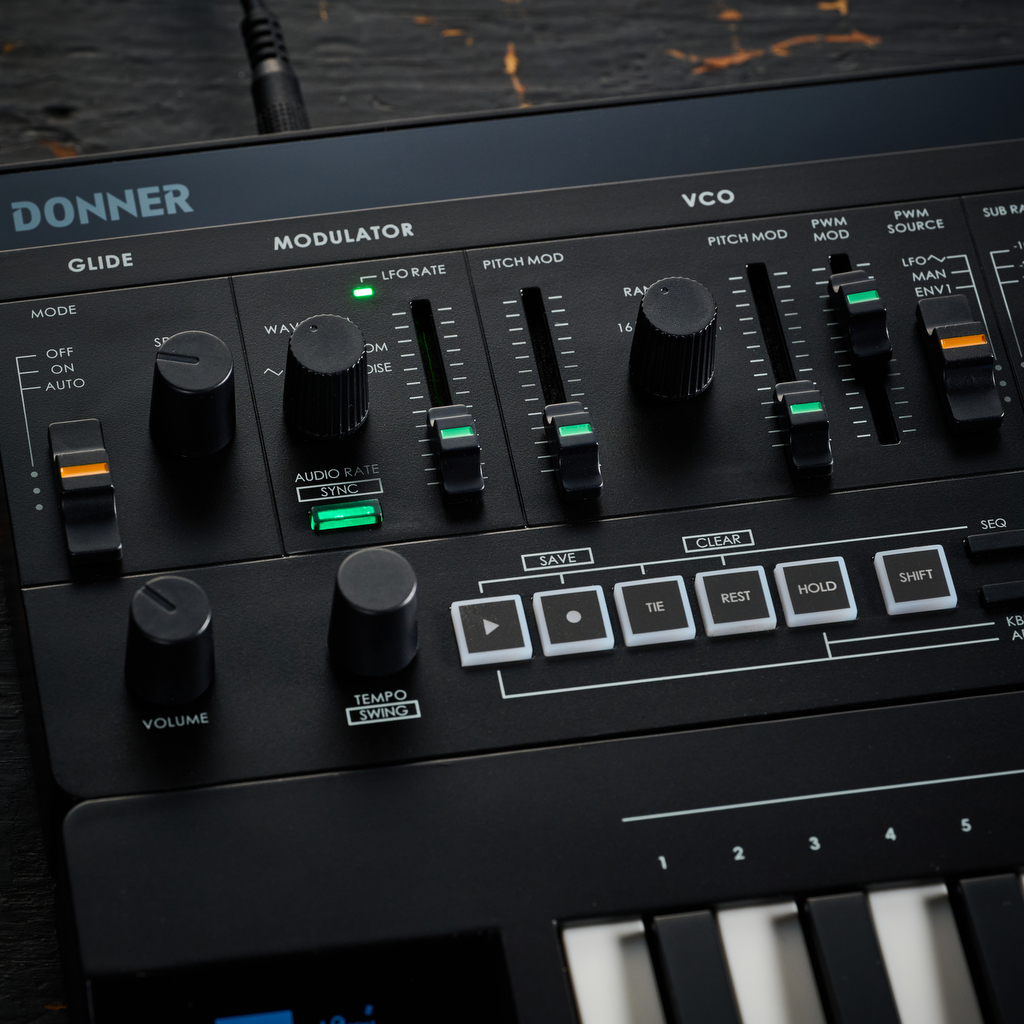
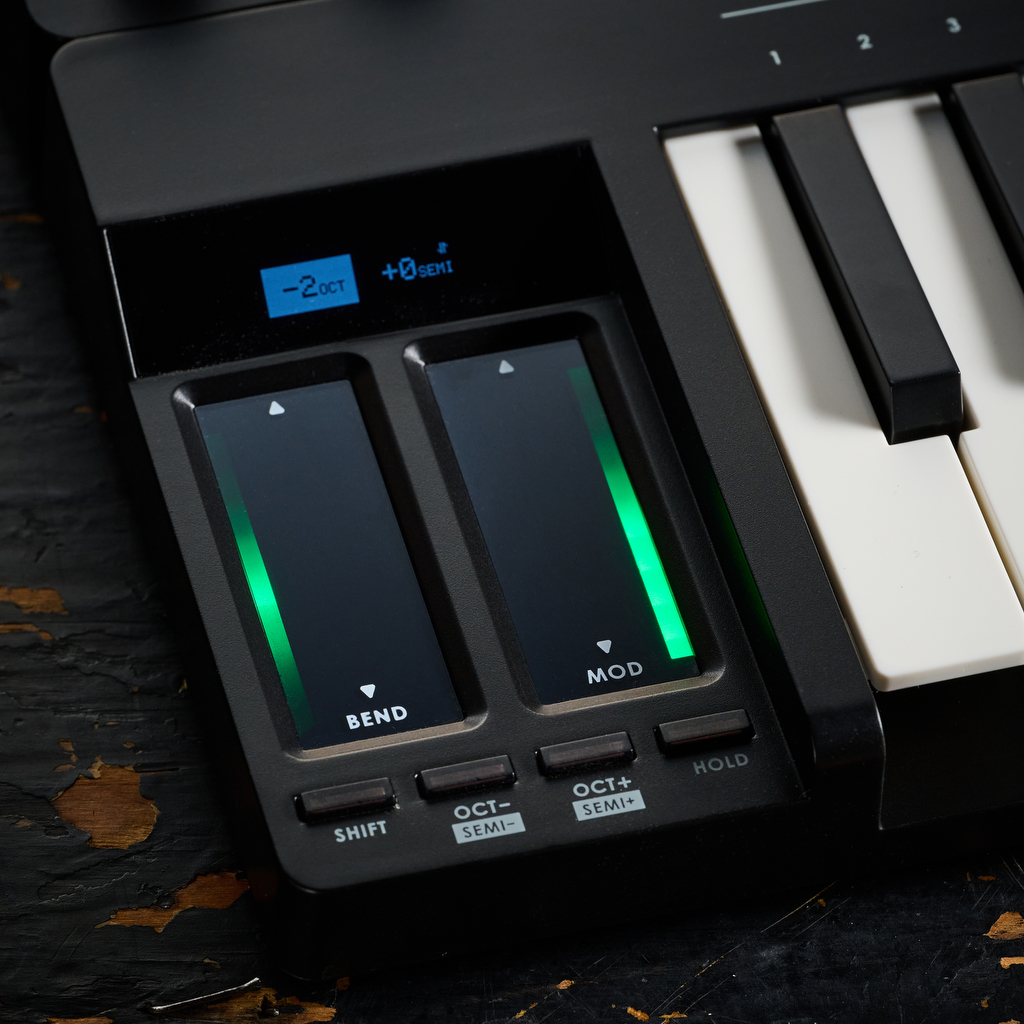
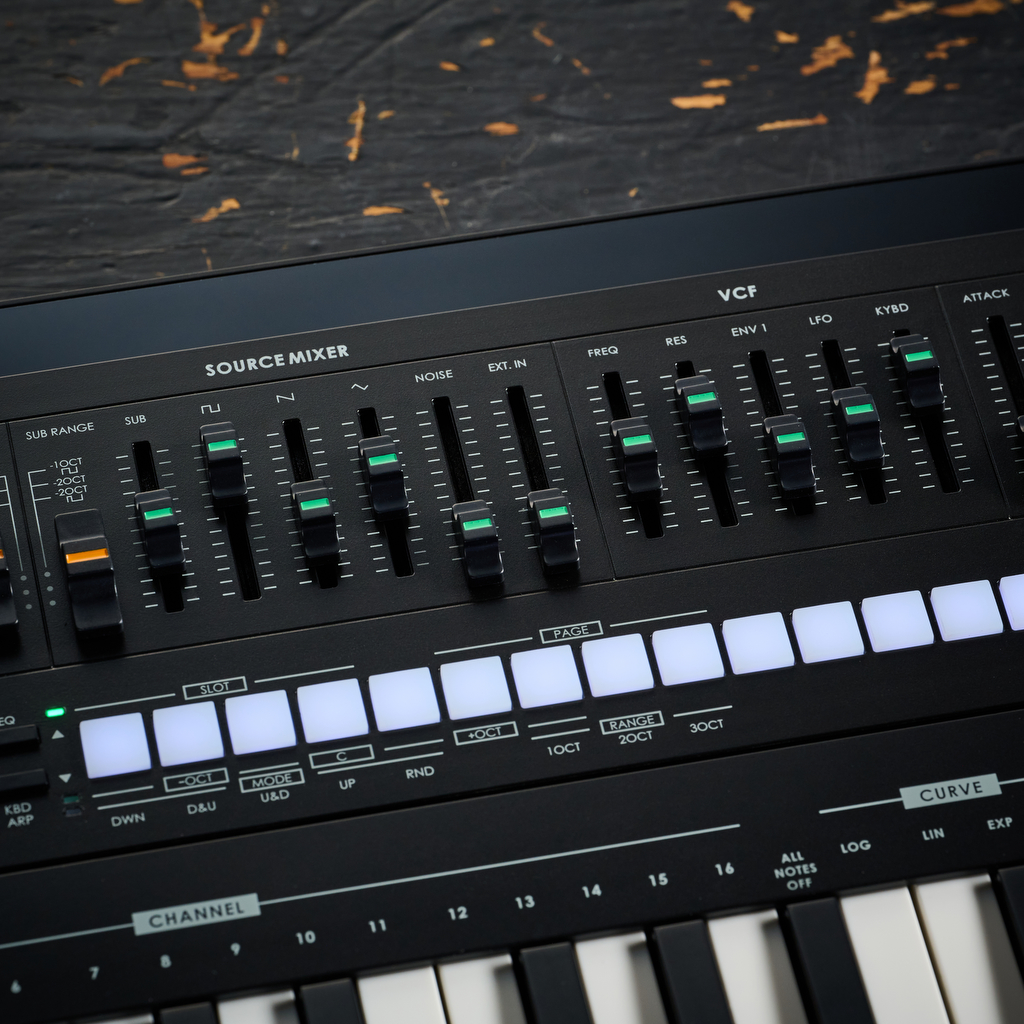
Broadly speaking, the L1 is another impressive update to the Roland template. It’s a better looking instrument than the B1 – its all black, slider-clad interface is a nicely modernised take on the design of the original.
The core elements of the 101 sound engine are all available here, and sound pretty on the money to my ears. The single oscillator has blendable sub, saw and noise outputs, along with a pulse output with PWM that can be routed from the LFO or envelope, or modulated by hand.
These feed into the low-pass filter that sounds appropriately acidic with the resonance raised and modulation applied. There’s a glide function too – another important element of the classic 101 sound, allowing for the creation of bendy portamento basses and leads.
SH-101 evolved
There are extras throughout the signal chain that offer additional sound design options without radically overhauling the format. Alongside the waveshapes offered by the original, the L1 also has a triangle wave output slide in the oscillator section.
The LFO adds additional functionality too, via the ability to sync to either the internal or an external clock, and the option to extend into audio rate modulation. This latter feature is a particularly nice touch, allowing for some gritty FM tones and filter modulation on top of the classic 101 sounds.
The most significant upgrade compared to the original is the inclusion of an additional ADSR envelope, meaning that the L1 has separate generators for the filter and amp envelope. I was a little skeptical about this when I first saw the L1 – the fact that the 101 shares a single envelope for its filter and amp is a significant part of its character, and separating these elements risks sacrificing authenticity in favour of flexibility.
Donner has smartly chosen to make this second envelope optional by including an envelope merge function in its menu, whereby the second ADSR mimics the settings of the first. The L1 also adds a selection of trigger modes for the amp, expanding the capabilities further.
In Env 2 mode, the second ADSR will affect the amp while the first remains routed to the filter. In Gate mode, meanwhile, the amp is simply turned on/off by incoming gate messages (ie a note being held down) while Env 1 affects the filter.
Cycle mode links the amplifier to the LFO in conjunction with the second ADSR envelope, as could be done on the original 101, which can be great for creating pulsing rhythmic tones, or chaotic synth effects when triggered by a random LFO. Finally, Drone is a new mode for the L1 that bypasses the amp completely to create an endlessly sustained output.
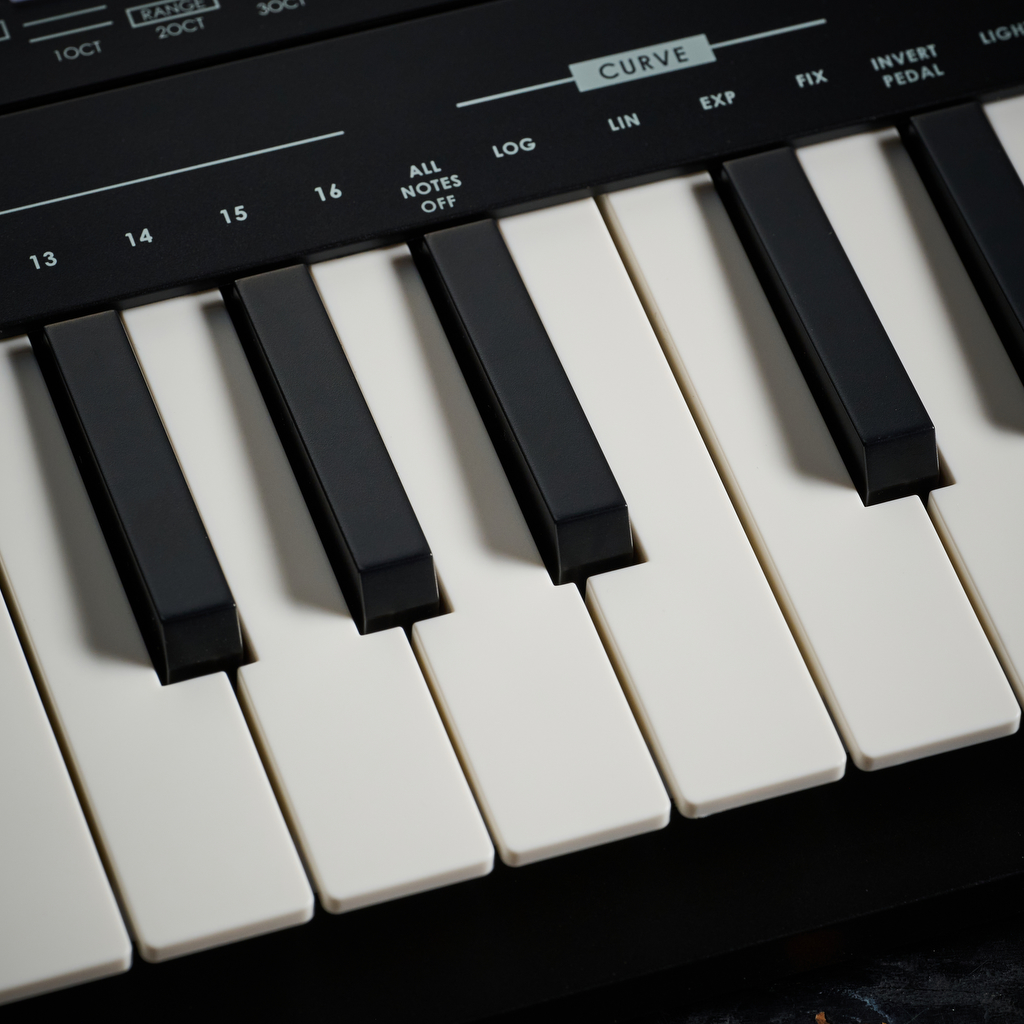
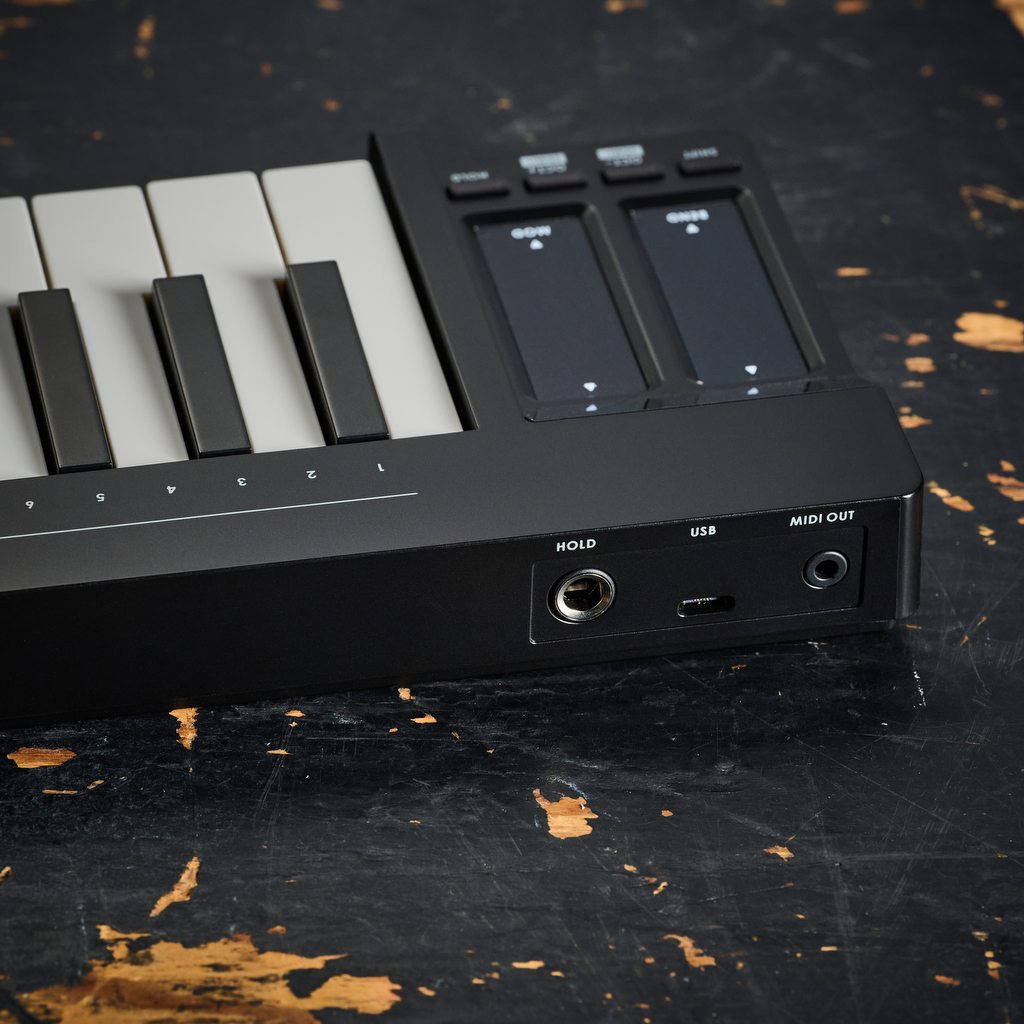
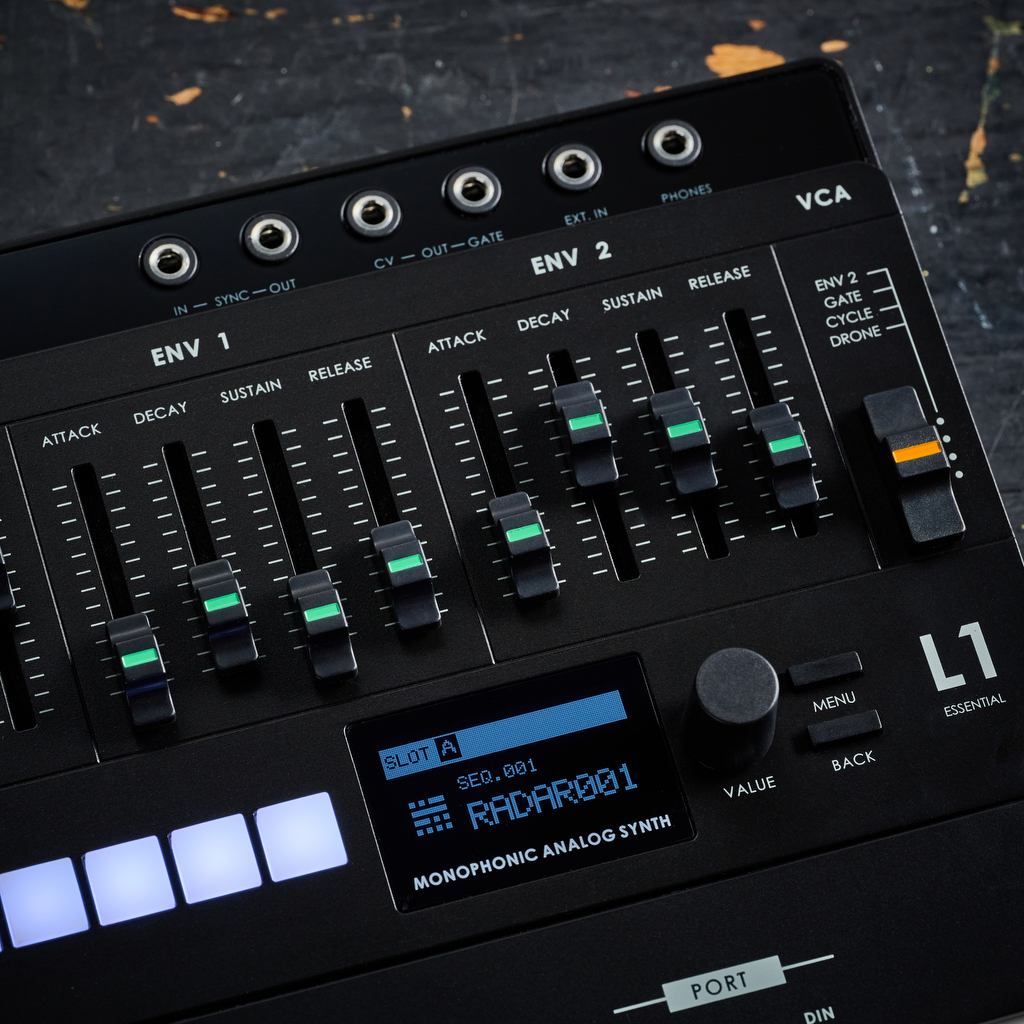
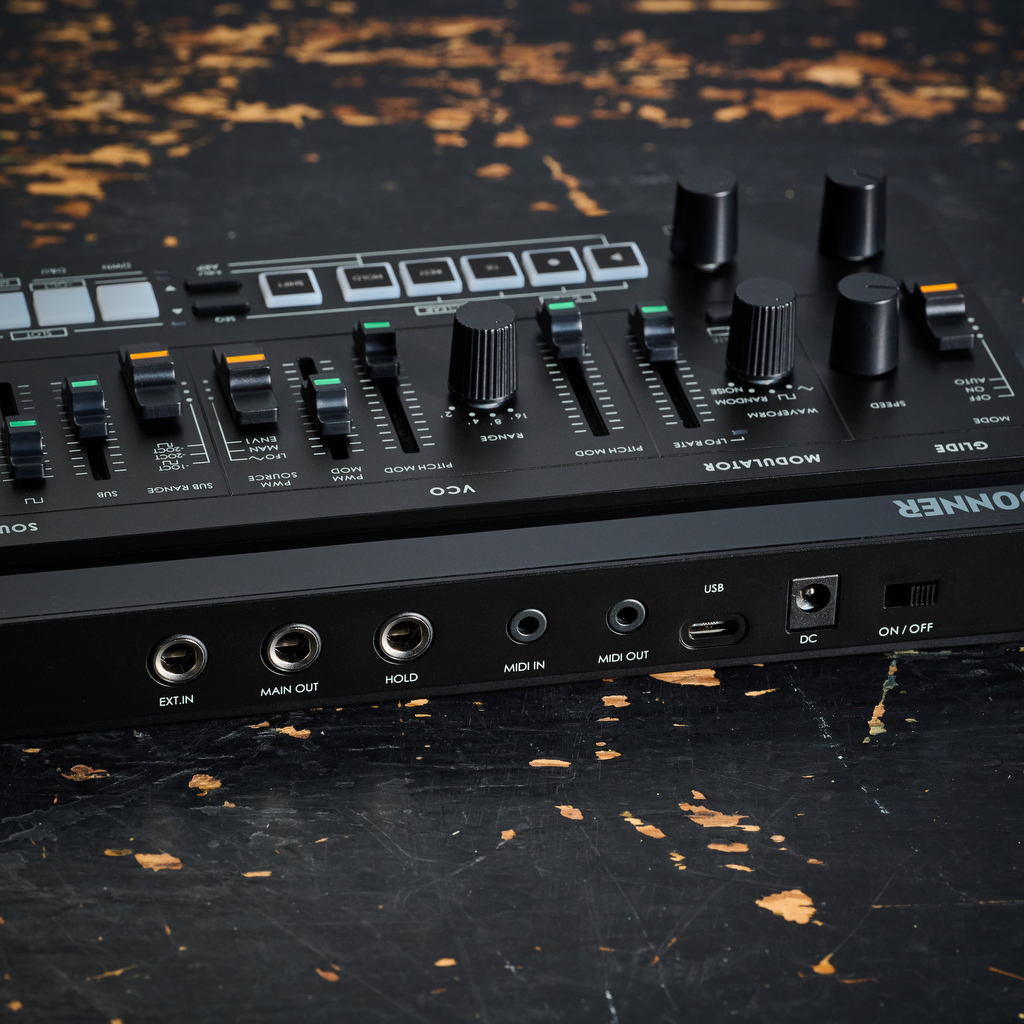
Beyond the sound engine itself, the other notable elements of the original SH-101 design were its arpeggiator and sequencer. This latter element was a fairly simple affair that let users input notes, rests and ties on-by-one in order to string together monophonic patterns. Despite its basic nature, many users did – and still do – find it an inspiring tool for quickly creating riffs and patterns with a characteristic machine-like feel.
Donner’s version keeps the basic workflow of both the arp and the sequencer intact, but improves the interface and adds extra functionality. Whereas the original 101 sequencer couldn’t save patterns, the L1 can recall up-to 128, and also features a song mode, allowing users to chain patterns and save up-to 32 compositions.
The L1 also allows the sequencer buttons to be used as a rudimentary keyboard, for playing and sequencing sounds when not connected up to a MIDI input or the KB-32M keyboard.
KB-32M keyboard
For this review, I’ve had access to both the L1 synth itself and its companion keyboard. Although this latter element is technically a separate product, seeing as the two are available as a bundle and – at the time of writing – the L1 is the only compatible instrument, it’s worth commenting on the KB-32M here.
All told, I like the concept. The mix and match keyboard/synth approach isn’t exactly new – Roland offers a similar accessory for its Boutique modules, although Donner’s version is a little larger and designed more overtly with standalone use in mind.
Although it’s obviously a cheap and compact keyboard, with mini keys and a lightweight, plastic construction, it feels solidly made and the keys themselves are pleasantly firm and responsive, given their size.
Around the back is a minimal selection of I/O – 3.5mm MIDI out (requiring an adapter), a USB-C connection and a hold pedal input. It’s enough to make the KB-32M a potentially handy travel keyboard in its own right, even without the L1 as a companion, although with a price of £109 there are various cheaper options out there if you’re just in the market for a MIDI controller.
My one misgiving about the synth/keyboard combo is the manner in which they connect. The keyboard connects to the L1 magnetically, which is firm enough when the two are placed on a desktop, but isn’t strong enough to keep the two together when picked up, which limits how well they can be used resting on your lap, or on certain keyboard stands. If Donner is committed to the concept, it would be nice to see some kind of case or tray you could place both in to keep them together a little more firmly.
Verdict
As for the L1 itself, it’s an overall impressive take on the SH-101 design, but does suffer from a few weaknesses. The most significant is noise leakage in its signal path. While this isn’t hugely severe, as soon as you turn the synth’s volume, low level background noise is immediately noticeable – likely caused by its digital elements affecting the analogue signal path. This isn’t a problem when playing the synth, and it’s easily gated/edited out, but it’s something to be aware of.
The other factor to bear in mind is what’s out there in terms of competition. Roland has two of its own budget hardware takes on the 101. The first is the Aira S-1, which is more of a digital evolution of the 101 than a clone and significantly upgrades the capabilities of the original. It does nail that classic 101 sound when needed though. That said, the interface bears no resemblance to that of the 101, and I miss the simple slider-based interface.
More faithful to the look and feel of the original is the Boutique SH-01A, which is a digital emulation but one that sounds excellent. It’s smaller than the L1 though, and verging on fiddly. It’s also more expensive.
The L1’s closest rival is Behringer’s MS-1, another analogue recreation. Behringer’s take has a keyboard attached, which gives it a bigger footprint, but it lacks some of the modernisations of Donner’s version. It’s also a little cheaper than the L1 module, and considerably cheaper than the synth and keyboard combo – plus, Behringer’s can be used with a keytar attachment like the original.
I do like the way Donner has evolved the SH-101 template while still capturing the sound of the original, although it must be said that beyond the additional ADSR and Drone more, it’s not hugely different to Behringer’s take. Donner's B-1 added analogue delay and saturation onto the 303 format, and it's a slight shame Donner hasn't take a similar route here.
I’d honestly be hard pressed to recommend an outright favourite of these various modern 101 options, including the L1. Each has its pros and cons and I’d happily take any of them. Essentially, it’s a good time to be in the market for a budget 101, and Donner’s Essential L1 is a welcome addition to the mix.
Hands-on demos
Donner
Alternatives
More of a modern evolution of the 101 concept than a straight recreation. The S-1 adds lots of extra capabilities but lacks the slider-based interface.
Read the full Roland S-1.
Probably the most faithful 101 clone on the market right now, Behringer's MS-1 is also one of the most affordable analogue synths on the market.
Specifications
Key features | Monophonic Analogue Synthesizer Sequencer with 128 slot memory and 32 slot song mode. CV I/O: Sync in, sync out, CV out, gate out External input Compatible with detachable KB32-M keyboard. |
Contact |
I'm the Managing Editor of Music Technology at MusicRadar and former Editor-in-Chief of Future Music, Computer Music and Electronic Musician. I've been messing around with music tech in various forms for over two decades. I've also spent the last 10 years forgetting how to play guitar. Find me in the chillout room at raves complaining that it's past my bedtime.
You must confirm your public display name before commenting
Please logout and then login again, you will then be prompted to enter your display name.
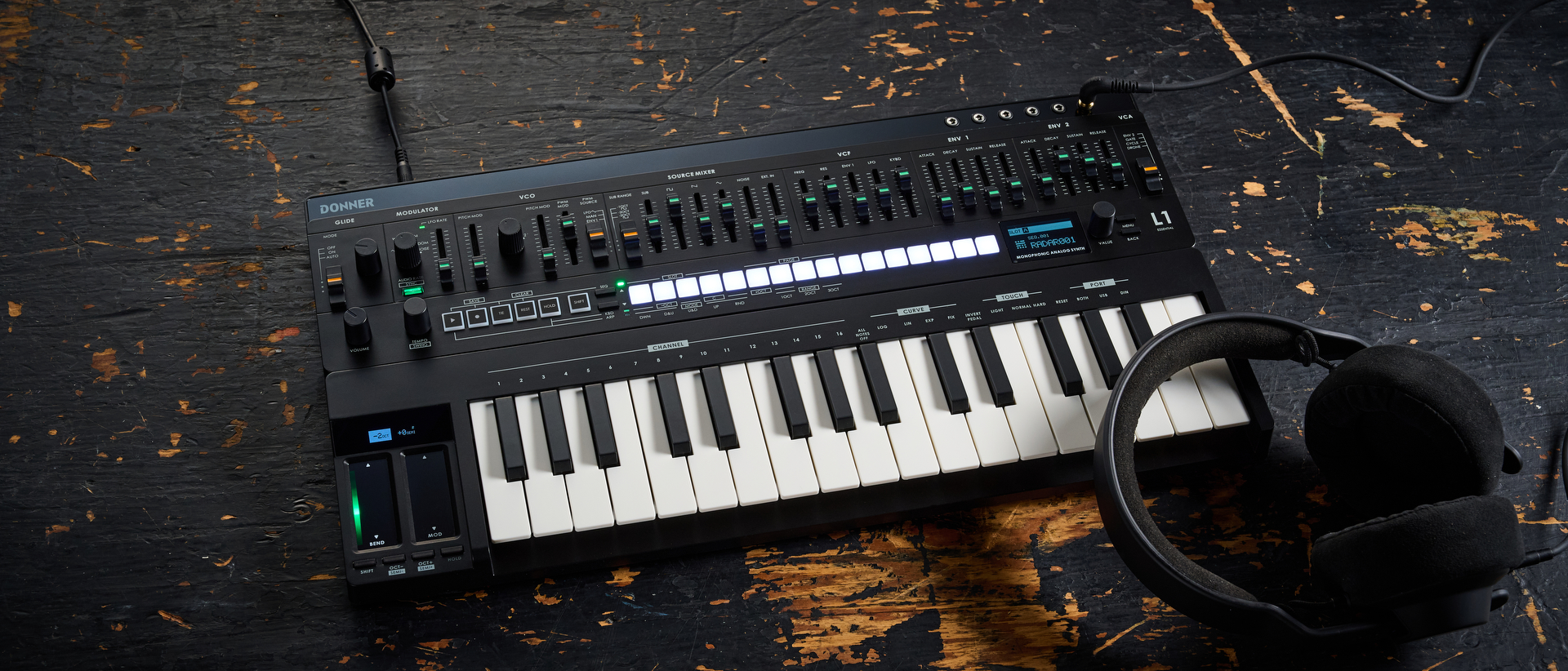

![[Introduction] Donner Essential L1 Monophonic Analog Synthesizer - YouTube](https://img.youtube.com/vi/mzGi_wmBvYY/maxresdefault.jpg)
